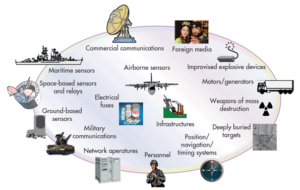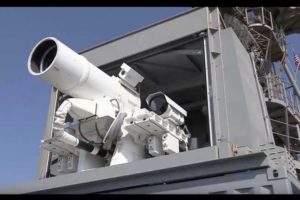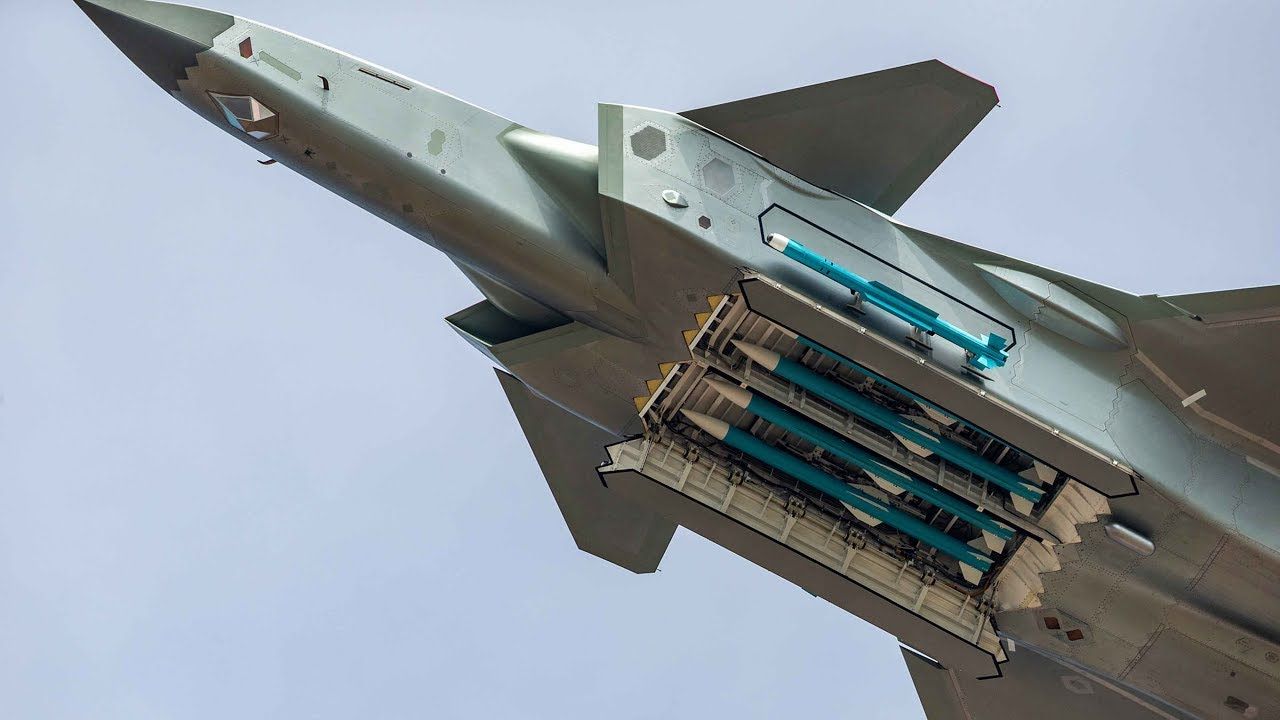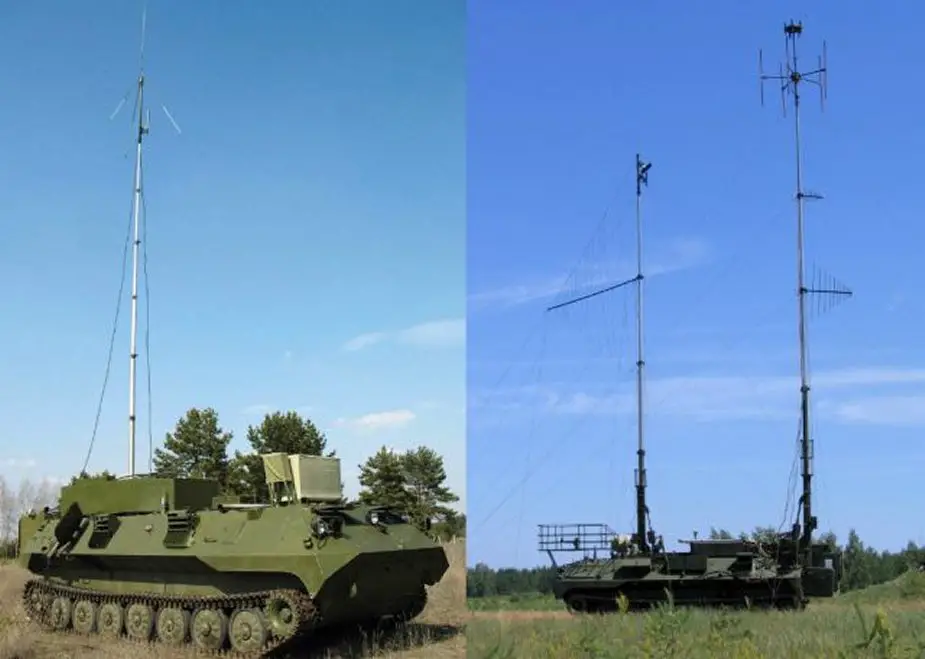ELECTRONIC WARFARE; CONCEPT
Electronic Warfare consists of taking an action that must involve the use of the electromagnetic spectrum or the energy used to control that spectrum; either attacking the opponent or preventing the opponent from attacking us. In this article we will take the opportunity to talk about the Electronic Warfare developed by the NATO sphere, particularly the United States and its allies on the one hand, and Russia and China on the other.
The purpose of Electronic Warfare is none other than to deny the enemy access to the electromagnetic spectrum (whether in the civil or military sphere) and to guarantee free and unimpeded access to our spectrum. Electronic Warfare is present in the air, sea, land and/or space dimensions through manned and unmanned systems. It can be directed to achieve objectives as broad as human beings, communications, radars or any other resource, whether civilian or military. [1]
Electronic warfare can have a dual objective: to attack civilian or military structures. If an actor attacks civil structures, it can paralyze key and strategic sectors necessary for the proper functioning of a State, such as energy supply or drinking water, but also internet, radio, television, telephone, etc.
With such an attack, terrible economic damage is achieved, but of course also psychological damage; it has been possible to establish the citizenship of the country under attack by attacking the feeling of vulnerability. It also shows the inability of the attacked State to protect vital structures and supplies, generating a defeatist spirit that moves it to avoid conflict in the face of a superior technological power.
On the other hand, if the targets are military, what the attacker has to do is to leave the rival "blind, deaf and confused" by disabling the sonar, radar, communications, GPS, etc. It is even possible to leave the enemy at our mercy in order to unleash a conventional attack on the previously established targets with the minimum possible damage.

Faced with this scenario, the organization of the attacked state will be absolutely destructured, without essential services, without efficient communication (not to say that it is either totally nullified or manipulated) between the leaders and their combat units and between them. Moreover, the capacity of the state under attack to use the mass media and the internet to transmit slogans in an ideological sense (nationalism, political ideology, religion) is totally blocked... The result is that the population will be forced to rise up against its leaders, thus breaking the triad of Clausewitz: army-government-society.
The disarticulation of this triad is already widely developed in the work of Gene Sharp, who speaks of using a "peaceful" opposition as a weapon of war, as a fifth column. However, this scenario also makes Clausewitz relevant, paradoxically, when he states "In the abstract the defensive form of war is stronger than the offensive". And "In abstract" is underlined, because also the new scenario gives a new dimension to the "law of numbers" of the Prussian thinker, since now the numbers contemplate inverse dimensions.
The law of numbers established that the size of armies was a determining variable when the other variables were constant (technology, armament, theory...), the law of numbers in ancient warfare favored the state under attack since, being in its territory, it could manage more resources. In the New Law of Numbers proposed here, the number of soldiers in armies is replaced by an ocean of war tools such as Electronic Warfare, climatic warfare, psychological warfare...
The form that the 4.0 industrial revolution and Electronic Warfare energy sources, among other multifactors, will take in the near future will determine how it can follow the path of what may be a new military revolution. A revolution that must go hand in hand with a nElectronic Warfare form of state and profound political and social transformations.
ELECTRONIC WARFARE; ARSENAL
Since the invention of radar during World War II, the arsenal of Electronic Warfare has progressed by leaps and bounds. Today it is a decisive factor for victory. We can state that just as without conquering air superiority it is unthinkable to obtain victory, without electronic superiority it is also unthinkable.
The first hostile action in a confrontation always involves the disruption and attack on the opponent's detection and communications systems. The main measures taken at the beginning of a conflict are to search, intercept, identify or locate sources of electromagnetic signals in order to obtain immediate recognition of the threat. In terms of countermeasures, it is clear that rival use of the electromagnetic spectrum must be prevented or reduced.
The different arsenal used to conduct Electronic Warfare has a different place and time in the warfare arena. Doing an analysis of the Electronic Warfare arsenal is a necessary step in preparing for war.

As a first step in analyzing the Electronic Warfare arsenal we must talk about the classic graphite bombs. Graphite bombs are a key weapon in electronic warfare. Since World War II, energy infrastructures have been a key objective. These bombs are designed to attack electrical networks, disconnecting the energy, but without causing the complete destruction of electronic equipment or energy distribution infrastructures. Bombs are used to go into action in the initial stages of an attack to cause chaos or as a measure of pressure on a government and/or its population.
Such bombs contain fine graphite fibers inside a container or warhead, designed to disperse them in the air in the form of a cloud. When they are launched over an electrical distribution station, the filaments, which are highly conductive and very light, float in the air and come into contact with exposed electrical cables and terminals, causing multiple short circuits that trigger the plant's protection mechanisms, at which point it is out of service.
Graphite pumps do not cause permanent damage to structures; once cleaned they can be put back into service. That's why they are called "Soft Bombs" and are included in non-lethal armament; BLU-114s would be a known type of graphite bomb. They were used in the First Gulf War (1991) and in Serbia (1999). South Korea would be prepared to use such a weapon against its northern neighbor.
In a second stage of development came the electromagnetic pulse or EMP, which is another system designed to trigger adverse reactions in an electrical network, only that its origin is in the Cold War. The EMP consists of an intense pulse of electromagnetic radiation that is generated by the interaction between a nuclear explosion and the upper atmosphere and has the particularity of creating intense electromagnetic fields in conductor lines and other electrical elements even up to thousands of kilometers. The EMP causes voltage peaks that short-circuit and burn the insulators in elements of an electrical network causing its blockage and physically destroying its components.
The US military has been shielding its own systems against electromagnetic pulses for decades, something that is not complicated, although it is expensive: it is enough to shield the electronic systems to make them invulnerable. Even the electronics of American fighter planes are shielded, so the military would not be greatly affected, although the civilian infrastructure could be devastated. It is believed that the United States would have weapons capable of causing an unexploded EMP, perhaps based on high-powered microwave generators.
In a third stage, and already within the computer world, came the cyber attack, which is the most sibylline attack system, due to the difficulty of precise detection, and the real impossibility of proving authentic authorship. Power grids in developed countries are controlled by computer systems that are easily manipulated and easily accessed from external computer networks, making them a perfect target for an attack using viruses, Trojans or common computer tools.

Within the current Electronic Warfare development, laser weapons are of vital importance, as they are non-kinetic weapons, and therefore have lower costs than kinetic systems; logistic needs are much lower. The cost of each shot is reduced to the cost of the electrical energy required by the system. For example, to shoot down a drone requires an expenditure of about $30 USD. Maintenance and spare parts are also a small expense.
Remember that it does not have ammunition, which relieves the logistical workload and cancels out the risk for the three operators handling the weapon. Being an electromagnetic weapon, the displacement of the laser beam is produced at the speed of light, causing the effect almost immediately. In addition, the laser beam is extremely narrow and precise, so the risk of collateral damage or friendly fire is greatly reduced. The USS Ponce of the US Navy, which is located in the Persian Gulf, is equipped with such a cannon.
Another type of modern weapon in the Electronic Warfare arsenal is directed energy weapons. The U.S. Navy has already experimented on a ship with a cannon capable of generating an electromagnetic field that can launch projectiles at a distance of 185 kilometers and with a speed seven times greater than sound. Radio frequency weapons, such as "drone jammers", are radio frequency guns that emit signals that interfere with the transmission of data between the drone and its control center. Electromagnetic radiation is another important tool of Electronic Warfare. With this possibility you could destroy all the electronic systems of a rival and take it directly to the Stone Age.
In another sense, we would have the CHAMP project against North Korea, which responds to the Advanced Microwave Electronic Interference Missile Project. The project is based on projectiles that emit very high frequency waves that would destroy electronic systems. The attacks are carried out with military equipment performing electromagnetic bombardments, and have been used in Afghanistan and Iraq to deactivate bombs and drones manufactured by China.
The missile SPEAR-Electronic Warfare (Select Precision Effects At Range-Electronic Warfare) becomes an "electronic bomb" against air defenses. MBDA-missile systems is developing a variant of its air-surface missile, the SPEAR 3, as an Electronic Warfare system to disrupt air defense systems. The SPEAR-Electronic Warfare is the result of an order from Defence Equipment & Support of the United Kingdom, which was intended to equip the RAF to develop SEAD (Suppression of Air Defence) missions.
The Electronic Warfare technology that will be used is Digital Radio Frequency Memory (DRFM), a system of electronic disruption and deception. It has not been reported whether it will have a warhead (most likely it will) since once its mission as Electronic Warfare is over it would be enough to take advantage of the kinetic energy of the impact to cause damage. Perhaps the mode of use is the launch of swarms with an estimated range of 130 kilometers. The obvious resemblance of the SPEARs to the Brimstones would make it possible to install the SPEAR-Electronic Warfare in the internal warehouse of the F-35 or to arm with three of them for each wing support of the Eurofighter Typhoon.

ELECTRONIC WARFARE; ACTORS
There are currently two main lines for the development of Electronic Warfare weapons. The first focuses on autonomous lethal weapon systems (drones in all areas), which are the basis of the future military revolution of robotic warfare. The second line is non-lethal weapons, such as sonic weapons. The lines of research are focused on actors that are military-like organizations with abundant funding, although there are also private organizations doing research in the field of Electronic Warfare.
One of the most active organizations in the development of nElectronic Warfare electronic warfare weapons is DARPA. The Pentagon provides at least $3 billion annually to the Defense Advanced Research Projects Agency (DARPA) for research, development and innovation of nElectronic Warfare technologies for military use, especially those related to cyberspace and the electromagnetic spectrum. The agency's priorities now include computer and electronic operations, bandwidth, unmanned systems (land, sea, air and space), information management, artificial intelligence, biometrics, wireless warfare, 3D printers, electromagnetic radiation and directed energy weapons.
Also within the US is IARPA; Advanced Research Projects Activity in Intelligence (IARPA). Under the direct dependence of the National Director of Intelligence, it is specialized in: microelectronic superconductors; advanced and alternative computing technologies; cyber security; satellite image processing; bioinformatics; electromagnetism; neuroscience, brain knowledge and artificial intelligence; radio frequencies; and autonomous underwater vehicles.
Today the great military powers have in their arsenals aircraft exclusively equipped with Electronic Warfare systems. Some combine the conditions of a fifth generation stealth and multipurpose fighter aircraft with those of Electronic Warfare by placing two pilots in the cockpit with separate functions, as is the case with China's Chuengdu J-20. In short, they would have electronic attack and jamming air capabilities. They would launch cyber-attacks on rival air defense and command and control systems.

For its part, Russia is hacking the GPS signal around the world through spoofing, which is a hacking technique that allows the simulation of false GPS locations. There is talk of thousands of recorded cases. For example, Norway complained diplomatically that Russia was disrupting its civil navigation through these Electronic Warfare procedures, making navigation "unacceptable and dangerous". Moreover, in the last year and a half, Norwegian military forces stationed on the militarized Kola Peninsula have been blinded by their GPS signals at least five times, especially to the pilots.
Examples of the use of Electronic Warfare today are abundant, though little known. For example, in 2014 the US State Department acknowledged that the crElectronic Warfare of the state-of-the-art destroyer USS Donald Cook was seriously demoralized after their encounter in the Black Sea on April 10 with a Russian Su-24 fighter-bomber, which was not carrying any bombs or missiles, but only a container with an Electronic Warfare system called Jibiny.
Several media outlets even claim that 27 U.S. sailors requested discharge from service after the experience. When approaching the destroyer, the Su-24's Jibiny system put radars, control circuits, information transmission systems, etc. out of service. The US destroyer's entire Aegis system was disabled. After this, Su-24 simulated a missile attack on the USS Donald Cook, which had been rendered totally blind and deaf. And it repeated that action a total of 12 times. When Su-24 moved away, the USS Donald Cook quickly headed for a Romanian port and never approached Russian waters again.

The Russian military industrial complex is immersed in the design of various devices and systems, apart from Jibiny. The Russian Airborne Troops have started to be equipped with the Infauna system. This system finds and isolates radio communication in HF and VHF bands from the electromagnetic spectrum, disabling all types of weapons that require remote control through frequencies.
Another important Electronic Warfare project is the Lesochek device, which performs the same functions as Infauna, but is much more compact: it can be carried in a backpack or a small briefcase. With this system it is very comfortable to attend important meetings, avoiding with this equipment that the most advanced intelligence services manage to spy on even a word of what is discussed in those meetings.
The Russian development activity of Electronic Warfare gives the same importance to the defense as to the attack, that is why they develop systems like Borisoglebsk-2, which is the basis of the electronic protection of the communications of the Russian army. This system has automatic control and four types of radio interference to track and disable active sources of communications. A dual-purpose system is the Zhitel device, which locates and blocks satellite and cellular phones, as well as GPS navigation systems. Its effectiveness was demonstrated during the conflict in South Ossetia, where it managed to disorientate Georgian unmanned vehicles.
The re-equipment of Russia's strategic forces with new means of Electronic Warfare is advancing at a dizzying rate, which leads to a reflection on the complexity and speed of development that the actors apply to Electronic Warfare: the first country to develop quantum technology will have an absolute advantage in Electronic Warfare. Quantum communications are totally secure, quantum radar can see the invisible, and its cryptography is inviolable.
[1] The interested reader can consult the following document: https://fas.org/irp/doddir/dod/jp3-13-1.pdf
 Copyright secured by Digiprove © 2019-2020 Quixote Globe
Copyright secured by Digiprove © 2019-2020 Quixote Globe